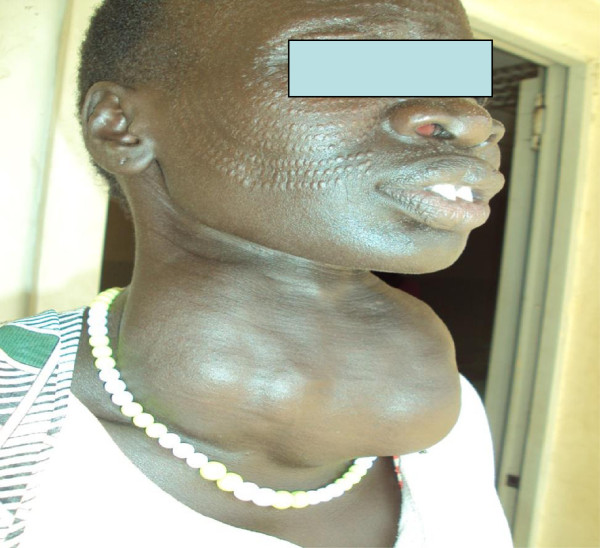Playlist
Show Playlist
Hide Playlist
Types of Thyroiditis with Case
-
Slides Thyroid Disease.pdf
-
Reference List Endocrinology.pdf
-
Reference List Thyroid Disorders.pdf
-
Download Lecture Overview
00:01 Let's go on to another case. 00:03 A 19 year old woman comes to see you complaining of neck pain which radiates to her ears. 00:09 She has neck swelling and dysphagia. 00:11 She thinks the symptoms were precipitated by an upper respiratory infection two weeks ago. 00:16 She also feels anxious and has loose stools. 00:18 On physical exam, she has an increased heart rate, tenderness to palpation over her anterior neck and a mild tremor in her hands. 00:27 What is the most likely diagnosis? So again here, we have symptoms of pain over the thyroid. 00:36 She has difficulty swallowing, dysphagia or odynophagia, usually difficulty swallowing, the medical term is dysphagia, pain with swallowing is odynophagia. 00:46 And these two could be differentiated further by asking more questions on history. 00:53 Further history indicates that she had a recent upper respiratory tract infection but she also has symptoms of anxiety and loose stool. 01:01 Again, pointing two potential clinical hyperthyroidism. 01:06 On physical exam, she has a tachycardia or increased heart rate and a tremor. 01:11 Again, this differs somewhat from Graves' disease and that she is presenting with pain over her thyroid where it's true, Graves' disease is pain-less. 01:21 Another important clue here to the potential cause of her hyperthyroidism is the recent viral infection. 01:28 The most likely diagnosis in this particular patient is the condition known as post-viral thyroiditis otherwise known as de Quervain syndrome. 01:38 Post-viral thyroiditis is a self limited inflammatory condition which causes the release of preformed thyroid hormone into the circulation. 01:46 The natural history of the condition starts with a thyroid toxic phase for 2 to 6 weeks. 01:52 This is then followed by a hypothyroid phase for 6 to 12 weeks before complete resolution. 02:00 The different forms of thyroiditis include painful lesions and painless lesions. 02:06 We'll start with the painful thyroid lesions. 02:08 These usually are also associated with a negative thyroid peroxidase antibody. 02:13 And the first one is de Quervain's disease or subacute thyroiditis as in our case. 02:20 Other causes of painful thyroiditis includes post viral inflammatory processes, infectious thyroiditis for other reasons like bacterial infections or immunocompromised patients who have thyroid infections from staphylococcus or streptococcal bacterial infections. 02:36 and then finally, in order to treat these conditions, we use anti-inflammatory drugs like non steroidals or in severe cases, systemic glucocorticoids. 02:51 The causes of painless thyroiditis tend to occur more commonly with positive thyroid peroxidase antibodies and the classic example here is the condition known as Hashimoto's thyroiditis. 03:03 Other causes can include thyroiditis induced in the postpartum state or thyroiditis caused by drugs. 03:11 Subacute thyroiditis usually presents biochemically as a low TSH and elevated T4 and when evaluating this by radioactive uptake scan, uptake within the thyroid is low, invariably less than 10%. 03:28 This is a very useful differentiating factor when comparing it to other causes of primary hyperthyroidism.
About the Lecture
The lecture Types of Thyroiditis with Case by Michael Lazarus, MD is from the course Thyroid Disorders. It contains the following chapters:
- Case 1.2
- Post-viral Thyroiditis
Included Quiz Questions
What information in the following patient's history suggests an alternative diagnosis to Graves' disease? A 19-year-old woman presents with neck pain that radiates into her ears. She has neck swelling and dysphagia, which she thinks were precipitated by an upper respiratory infection 2 weeks earlier. She also feels anxious and has loose stools. Physical exam: increased heart rate, tenderness to palpation over her anterior neck and a mild tremor of her hands.
- Painful thyroiditis
- No family history of Graves' disease
- Recent fungal infection
- Loose stools
- Mild tremor of the hands
What is the expected course of symptoms from subacute thyroiditis?
- 2–6 weeks of thyrotoxic symptoms, followed by 6–12 weeks of hypothyroid symptoms
- 6–12 weeks of hypothyroid symptoms, followed by 2–6 weeks of thyrotoxic symptoms
- It depends on the use of NSAIDs or glucocorticoids.
- It depends on the viral etiology underlying the presentation.
- The natural history of this disease is not well defined.
What is the most likely diagnosis for the case described below? A 19-year-old woman presents with neck pain that radiates into her ears. She has neck swelling and dysphagia, which she thinks were precipitated by an upper respiratory infection two weeks earlier. She also feels anxious and has loose stools. Physical exam: increased heart rate, tenderness to palpation over the anterior neck, and a mild tremor of the hands.
- De Quervain (subacute) thyroiditis
- Graves' disease
- TSH-secreting pituitary adenoma
- Hashimoto thyroiditis
Customer reviews
5,0 of 5 stars
| 5 Stars |
|
5 |
| 4 Stars |
|
0 |
| 3 Stars |
|
0 |
| 2 Stars |
|
0 |
| 1 Star |
|
0 |




